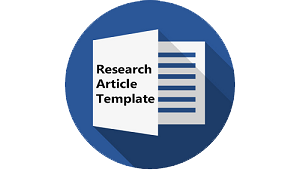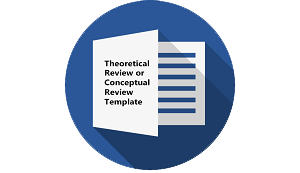Ambition of the Main Character In Nobody Movie Directed by Ilya Naishuller
DOI:
https://doi.org/10.30957/lingua.v20i1.809Keywords:
Ambition, Literature, MovieAbstract
The purposes of the research are to investigate ambition and the characteristics of the main character in Nobody movie directed by Ilya Naishuller. This research used descriptive qualitative method to analyze the data. This research was taken from Nobody Movie. The results of this study show that: (1) The ambition of the main character (Hutch) can be seen in Nobody movie. It happens when Hutch knows the criminals take the cat bracelet of his daughter. His ambition is to protect his family. Hutch will be paying off all the problem and consequences to take any risk by protecting his whole family. He would like to find them and bring it back. He promises. He looks for the criminals, a Russian mafia. He fights and meets the Yulian’s People to revenge. (2) There are 5 characteristics of the ambition in Nobody movie, namely: Achievement Motivation Ambition, Self-Attitude Ambition, Attitude Dominance Ambition, Self-regulation and Attitude Dominance Ambition.
Downloads
References
Albert, Philipp. 2019. “Peer Effects of Ambition Discussion Paper Markets and Choice,â€
Almomani, Fatmah Ahmad, and Aida Theeb. 2016. “The Ambition Level and Its Relation with Perceived Self-Efficacy in Light of Certain Variables among a Sample of Jordanian Universities Students.†International Journal of Asian Social Science 6 (12): 683–97. https://doi.org/10.18488/journal.1/2016.6.12/1.12.683.697.
Bacon, Simon. 2018. “The Gothic.†The Gothic, 1–265. https://doi.org/10.4324/9781315755953-4.
Barsukova, Oksana. 2015. “Bad Ambition.†Journal of Process Management. New Technologies 3 (4): 8–11.
Barsukova, Oksana. 2016. “Psychological Characteristics of Ambitious Person.†Journal of Process Management. New Technologies 4 (2): 79–80. https://doi.org/10.5937/jpmnt1602079b.
Benschop, Yvonne, Marieke van den Brink, Hans Doorewaard, and Joke Leenders. 2013. “Discourses of Ambition, Gender and Part-Time Work.†Human Relations 66 (5): 699–723. https://doi.org/10.1177/0018726712466574.
Budiman, Muhammad Arief, and Ikha Listyarini. 2018. “Analyses of Short Stories Using Lacan’s Psychoanalysis.†E-Structural 1 (01): 1–23. https://doi.org/10.33633/es.v1i01.1816.
Burunat, Enrique. 2016. “Love Is Not an Emotion.†Psychology 07 (14): 1883–1910. https://doi.org/10.4236/psych.2016.714173.
Danyte, Milda. 2011. “Introductionto the Analysis of Crime Fiction.†https://eltalpykla.vdu.lt/bitstream/handle/1/225/ISBN9789955126980.pdf?sequence=1.
Dinurriyah, Itsna Syahadatud. 2004. “Theory of Literature: An Introduction.†A Handbook For English Department Undergraduate Students Faculty of Letters and Humanities UIN Sunan Ampel Surabaya.
Hapsari, Astri. 2016. “Literary Competence For The Teaching Of Literature In Second Language Educational Context.†Journal of English and Education 5 (1): 29–36. https://doi.org/10.20885/jee.vol5.iss1.art2.
Hughes, Jennifer L., and Abigail A. Camden. 2020. “Using Chapman’s Five Love Languages Theory to Predict Love and Relationship Satisfaction.†Psi Chi Journal of Psychological Research 25 (3): 234–44. https://doi.org/10.24839/2325-7342.jn25.3.234.
Hunt, Peter. 2005. “Introduction: The Expanding World of Children’s Literature Studies.†Understanding Children’s Literature: Second Edition, 1–14. https://doi.org/10.4324/9780203968963.
Indriani, Dinah, Surya Sili, and Setya Ariani. 2019. “An Analysis of Intrinsic Elements in Mama Film by Andreas Muschietti.†Jurnal Ilmu Budaya 3 (1): 13–24. http://repository.usu.ac.id/handle/123456789/24148.
Jiang, HaoJun. 2017. “Different Types of Love in Polyamory: Between Primary and Secondary,†35.
Johnson, Brian, and Daniela Flores Mosri. 2016. “The Neuropsychoanalytic Approach: Using Neuroscience as the Basic Science of Psychoanalysis.†Frontiers in Psychology 7 (OCT): 1–12. https://doi.org/10.3389/fpsyg.2016.01459.
Karandashev, Victor. 2015. “A Cultural Perspective on Romantic Love.†Online Readings in Psychology and Culture 5 (4): 1–21. https://doi.org/10.9707/2307-0919.1135.
Kuai, Qun. 2018. “The Definition and Interpretation of Love Emotion in the Philosophy of Language,†no. 678: 45–49. https://doi.org/10.25236/icecbn.2018.007.
Lapandja, Fadlun K D, and Sriati Usman. 2016. “Fadlun K.D Lapandja 1 , Sriati Usman 2 , Muhsin 3.†A Study of Main Character and Plot in Ahmad Fuadi’S “Negeri 5 Menara†4 (1): 1–13.
Lapsley, Daniel K, and Paul C Stey. 2011. “Id, Ego, and Superego Daniel K. Lapsley and Paul C. Stey,†1–9.
Oktadistio, Fyngky, Mazrul Aziz, and Zahrida. 2018. “An Analysis of Direct and Indirect Speech Acts Performed By.†Journal of English Education and Teaching (JEET) 2 (1): 59–67. https://ejournal.unib.ac.id/index.php/JEET/article/download/4729/2593.
Panda, Ankitaakankhya. 2020. “GENRE FICTION AND THE HIGH LITERARY†8 (2): 1758–60.
Pane, Dewi Nurmasari, Miftah EL Fikri, and Husni Muharram Ritonga. 2018. Psychology - Tâm Lý Há»c. Journal of Chemical Information and Modeling. Vol. 53.
Pramesti, Tri. 2015. “Considering Young Adult Literature as a Literary Genre.†Parafrase 15 (01): 1–10.
Putri, Cindy. 2018. “The Characterization of the Main Character in Gone Girl Film.†Linguistica 7 (3): 1–14. https://doi.org/10.24114/ling.v7i3.11888.
Rahmat Kaur Kochar, and Dr. Daisy Sharma. 2015. “Role of Love in Relationship Satisfaction.†International Journal of Indian Psychology 3 (1). https://doi.org/10.25215/0301.102.
Ramrao, Totawad Nagnath. 2016. “Film and Literature : An Overview Research Paper.†Epitome 2 (9): 149–56.
Saylor. 2012. “This Text Was Adapted by The Saylor Foundation under a Creative without Attribution as Requested by the Work ’ s Original Creator or Licensee .†The Saylor Foundation, 1–542. http://www.saylor.org/books.
Septiadi, Hidayat Nur, Andayani, and Nugraheni Eko Wardani. 2019. “Analysis of Character’S Personality in Novel Ulid By Mahfud Ikhwan Using Sigmund Freud Psychoanalysis.†The 2nd International Conference on Language, Literature and Teaching, no. c: 176–84.
Suardi Utama, I Ketut, Putu Ayu Asty Senja Pratiwi, and I Made Sena Darmasetiyawan. 2018. “Characterization and Three Dimensions of the Main Character in Looking for Alaska.†Humanis 22 (2011): 102. https://doi.org/10.24843/jh.2018.v22.i01.p15.
Tristán, Meritxell Serrano. 2014. “Psychoanalysis and Translation : A Literature Review.†Letras 2 (56): 55–88. www.revistas.una.ac.cr/index.php/letras/article/download/8605/9913.
Wulan, Sri. 2020. “The Significance of Ecological Literature In.†Literature and Environment 19 (4).
Yastanti, Unpris., Sinta Isni.a, and Irwin Ananta V. 2021. “Racism in Hidden Figures Movie Directed by Theodore Melfi.†Lingua 18 (1): 105–24. https://doi.org/10.30957/lingua.v18i1.684.
Young, Deidra J. 1998. “Ambition , Self-Concept , and Achievement : A Structural Equation Model for Comparing Rural and Urban Students.†Journal of Research in Rural Education 14 (1): 34–44.
Downloads
Published
How to Cite
Issue
Section
License
Authors who publish with this journal agree to the following terms:
- Authors retain copyright and grant the journal right of first publication with the work simultaneously licensed under a Creative Commons Attribution-ShareAlike 4.0 International License that allows others to share the work with an acknowledgement of the work's authorship and initial publication in this journal.
- Authors are able to enter into separate, additional contractual arrangements for the non-exclusive distribution of the journal's published version of the work (e.g., post it to an institutional repository or publish it in a book), with an acknowledgement of its initial publication in this journal.
- Authors are permitted and encouraged to post their work online (e.g., in institutional repositories or on their website) prior to and during the submission process, as it can lead to productive exchanges, as well as earlier and greater citation of published work (See The Effect of Open Access).















